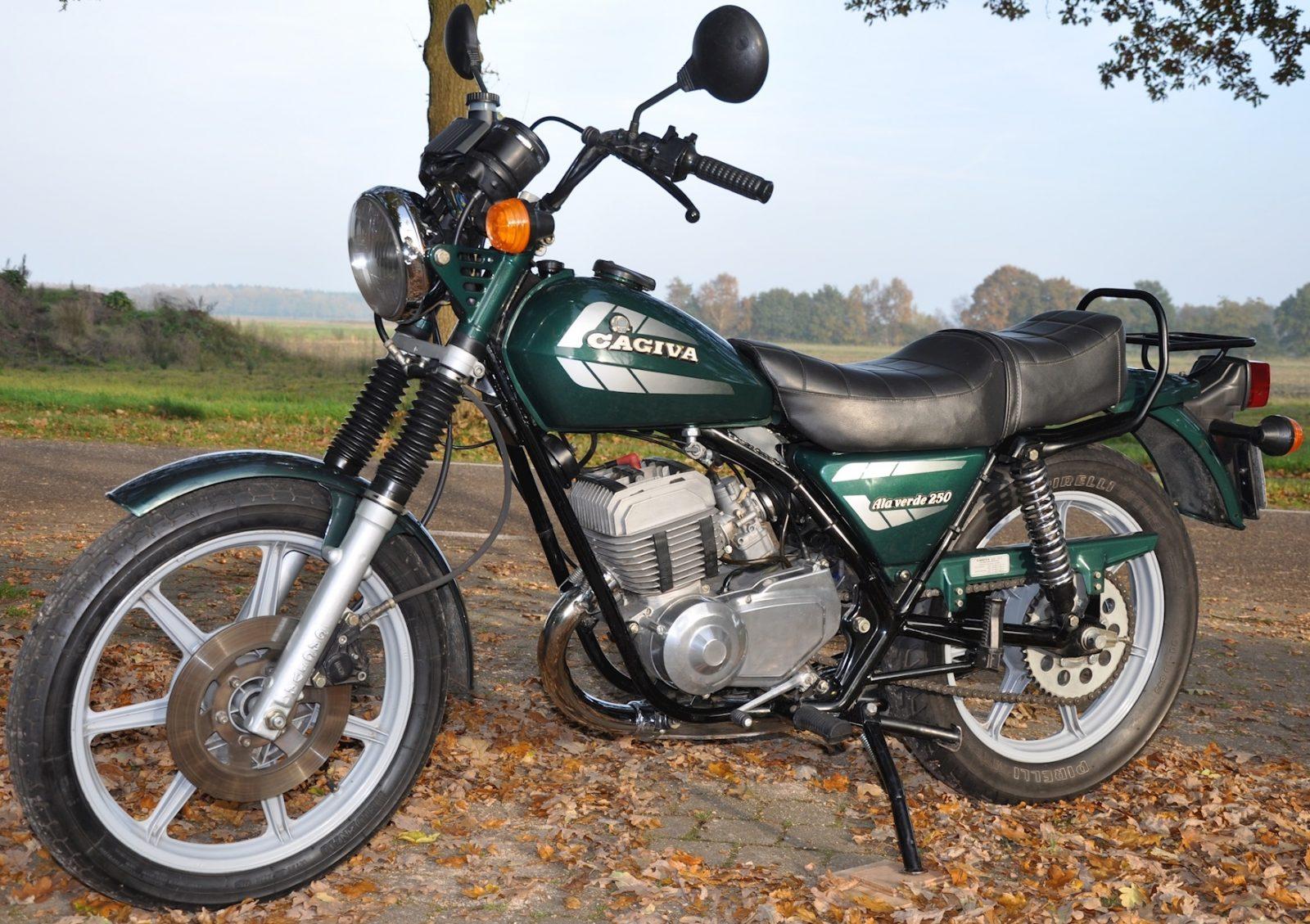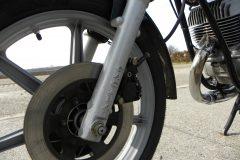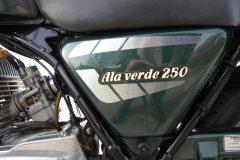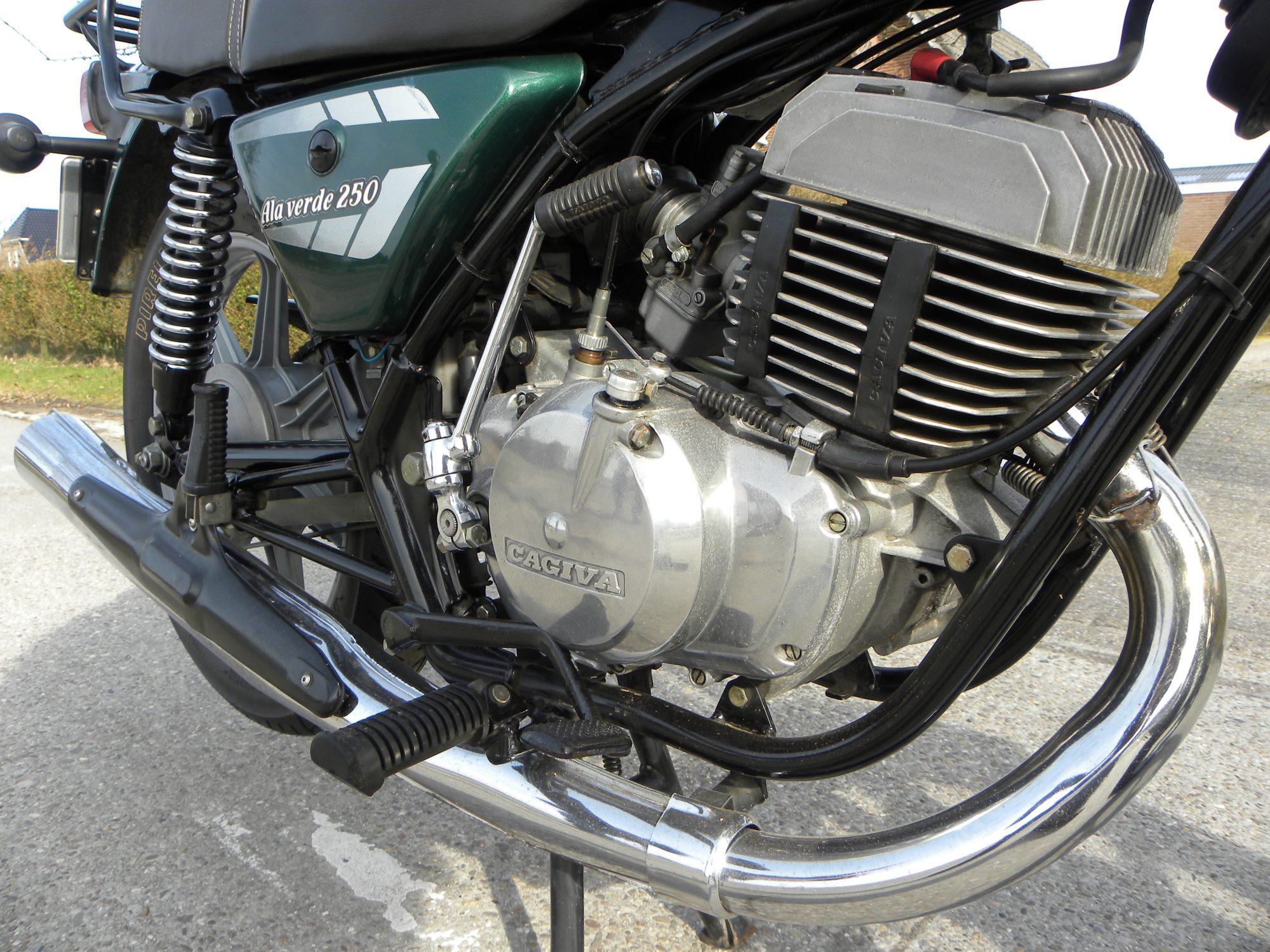In Wezep we saw a strange 'Ala Verde'. It was not an Aermacchi but a Cagiva two-stroke Ala Verde. We had already experienced the 350 cc models. There was little progress in comparison to an 350 cc two-stroke from Japan, but the 350s steered like razors. And now we were eye-catching with a ZGAN 250 cc model.
And then we are talking about a motorcycle with a Yamaha-inspired block, an Aermacchi and Harley-Davidson past and apparently a life that has been very luxurious up to the moment we saw it. Is the Cagiva SS250 therefore a sought after and extremely expensive classic? No! But such a rare Italian here is a member of a once very ill-fated family.
The brand
Cagiva: Castiglioni Giovanni Varese, Cagiva Motor SpA, Schiranna, Varese (about 1978 today, because the brand is coming back, now with an electric motorcycle) was a company founded in 1928 that made small things and entered the motor market in 1978 after the acquisition of the Aermacchi plant in Varese, which at that time was owned by Harley-Davidson. The first machines were therefore called HD Cagivas. Aermacchi blocks were used in the beginning.
A factory including all staff
In October 1979, Cagiva was officially the owner of the AMF-Harley Davidson plant. And the start certainly didn't seem wrong. With a workforce of 150 people, the factory annually produced such 40.000, 2-stroke and 4-stroke motorcycles with a cylinder capacity from 125 to 350cc. Until then, those bicycles were sold under the name Harley-Davidson - Cagiva.
From 1980 the motorcycles left the factory gates under their own name Cagiva. From that moment the brand became known as an engine manufacturer with the possibility to build engines, frames and accessories in-house. Jokes quickly corrupted the name here to 'guinea pig'
A European winner
In the early 80, Cagiva was the only Italian manufacturer that managed to withstand the invasion of Japanese brands. Cagiva's offer consisted of motocross, enduro and models for the public road. In the home country, Cagiva was the market leader in the lighter motorcycles segment.
In the middle of 80, Cagiva attacked the heavier motorcycle market with motorcycles with a lot of Ducati genes and engine blocks from 350 to 1000cc. Cagiva improved the Ducati engines, made more adjustments and within a short time the distressed Ducati became an important brand again. Moto Morini, MV Agusta, TGM and Husqvarna were also added to the group. It was a very good move. Since 1985, Cagiva was the largest engine manufacturer outside of Japan.
The Elefant as a success number
The allroad Elefant became one of the most successful models of Cagiva. But there were also models that remained under the radar north of Italy. And the 250 cc two-stroke in the photos, which is now presented in fashion as a 'naked bike', was one of them. This basal two-stroke was called (sort of) Harley-Davidson ss250 and had an almost identical 350 cc brother. The machine belonged to the series of 2-stroke motorcycles that were built from the beginning of 1970 to 1978 such as the SX (the 'X' stood for a scrambler version), the 350, SS (T) -350, SR-100, Z-90, X-90 and the TX-125. The basic design of the 250 and 350 cc machines was attributed to Yamaha, and that is certainly not the worst source you can have as an Italian motorcycle manufacturer.
But the environmental requirements were already too urgent to put the two-stroke engines out of play. And with us, the engines were seen as 'very elegant Jawas'. And we really only wanted heavy engines. The 350 cc version has been sold here. And if you find one here, it is often a weathered one. Mechanically these engines can handle that well. But paint and chrome are a bit too Italian for our harsh climate. The (250 and 350 cc) specimens that are offered in Italy are optically often fresher. A short excursion to the Italian sales sites such as 'subito' also teaches that the (asking) prices in Italy are higher than the price of this copy. But apparently the Netherlands is simply a country where classics are cheap.







Hi, I bought, the HD Cagiva SST 350cc back in 1979 in the Uk, I used it for one summer, then put it in the garage having done 3500 miles. The bike was moved from Oldham to Fleetwood (by the sea), here it got a little rust, mainly pitting on the chrome work. I now live in New Zealand the bike followed me over, its still in really good condition for ita age, I have started to restore it, the paint work has been done, frame repainted and Im just about to start on the chromework, so any history on these machines is great, Thanks
Phil
Nice article Dolf Peeters!
Interesting article!